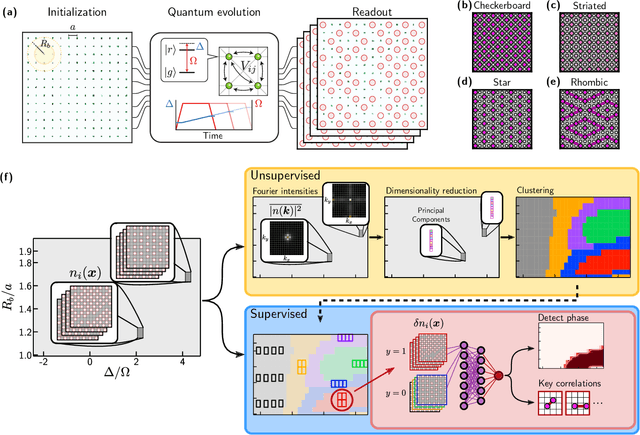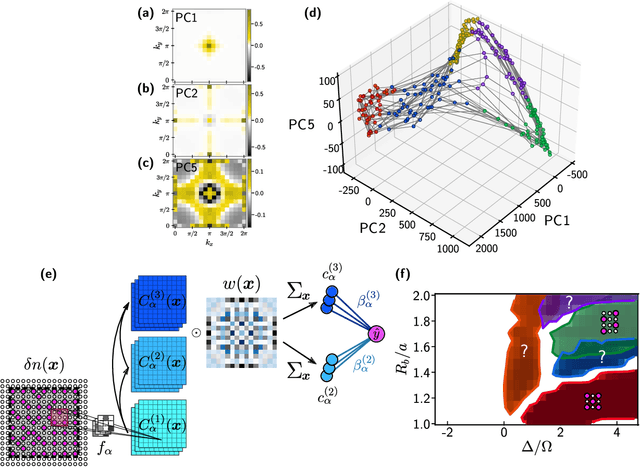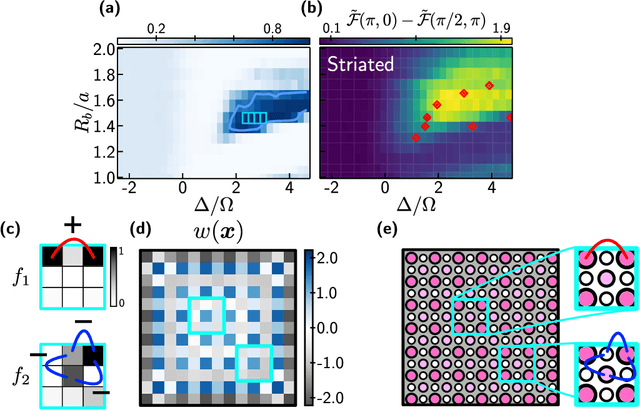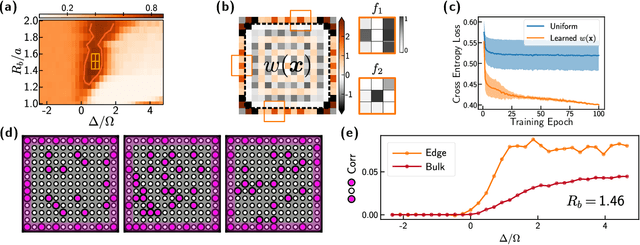Subir Sachdev
Learning topological states from randomized measurements using variational tensor network tomography
Jun 04, 2024



Abstract:Learning faithful representations of quantum states is crucial to fully characterizing the variety of many-body states created on quantum processors. While various tomographic methods such as classical shadow and MPS tomography have shown promise in characterizing a wide class of quantum states, they face unique limitations in detecting topologically ordered two-dimensional states. To address this problem, we implement and study a heuristic tomographic method that combines variational optimization on tensor networks with randomized measurement techniques. Using this approach, we demonstrate its ability to learn the ground state of the surface code Hamiltonian as well as an experimentally realizable quantum spin liquid state. In particular, we perform numerical experiments using MPS ans\"atze and systematically investigate the sample complexity required to achieve high fidelities for systems of sizes up to $48$ qubits. In addition, we provide theoretical insights into the scaling of our learning algorithm by analyzing the statistical properties of maximum likelihood estimation. Notably, our method is sample-efficient and experimentally friendly, only requiring snapshots of the quantum state measured randomly in the $X$ or $Z$ bases. Using this subset of measurements, our approach can effectively learn any real pure states represented by tensor networks, and we rigorously prove that random-$XZ$ measurements are tomographically complete for such states.
Machine learning discovery of new phases in programmable quantum simulator snapshots
Dec 20, 2021



Abstract:Machine learning has recently emerged as a promising approach for studying complex phenomena characterized by rich datasets. In particular, data-centric approaches lend to the possibility of automatically discovering structures in experimental datasets that manual inspection may miss. Here, we introduce an interpretable unsupervised-supervised hybrid machine learning approach, the hybrid-correlation convolutional neural network (Hybrid-CCNN), and apply it to experimental data generated using a programmable quantum simulator based on Rydberg atom arrays. Specifically, we apply Hybrid-CCNN to analyze new quantum phases on square lattices with programmable interactions. The initial unsupervised dimensionality reduction and clustering stage first reveals five distinct quantum phase regions. In a second supervised stage, we refine these phase boundaries and characterize each phase by training fully interpretable CCNNs and extracting the relevant correlations for each phase. The characteristic spatial weightings and snippets of correlations specifically recognized in each phase capture quantum fluctuations in the striated phase and identify two previously undetected phases, the rhombic and boundary-ordered phases. These observations demonstrate that a combination of programmable quantum simulators with machine learning can be used as a powerful tool for detailed exploration of correlated quantum states of matter.
 Add to Chrome
Add to Chrome Add to Firefox
Add to Firefox Add to Edge
Add to Edge